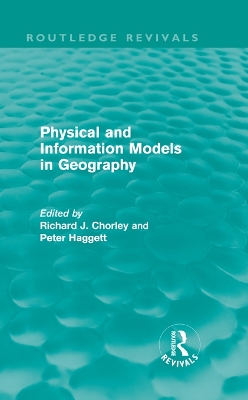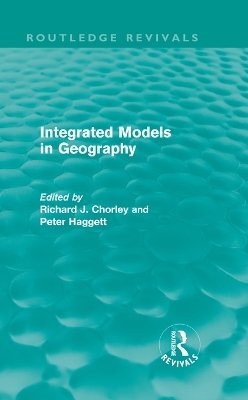Routledge Revivals
5 total works
The History of the Study of Landforms
by Richard J. Chorley, Antony J. Dunn, and Robert P. Beckinsale
This re-issued title, first published in 1973, forms the second volume of The History of the Study of Landforms. This volume is entirely devoted to the life and work of the world's most famous geomorphologist, William Morris Davis (1850-1934). It contains a treatment in depth of Davis' many contributions to the study of landforms including:
- the cycle of erosion,
- denudation chronology,
- arid and karst geomorphology
- the coral reef problem.
Physical and Information Models in Geography (Routledge Revivals)
by Richard J. Chorley and Peter Haggett
First published in 1967, this book explores the theme of geographical generalization, or model building. It is composed of eight of the chapters from the original Models in Geography, published in 1967. The first chapter broadly outlines geographical generalization and examines the nature and function of generalized statements, ranging from conceptual models to scale models, in a geographical context. The following chapter deals with model theory in a wider scientific framework and the rest of the book discusses models of physical systems and information models. The book considers model-type generalizations that are applied in the three fields of geomorphology, meteorology and climatology, and hydrology before focusing on the transference of information and ideas in geography.
This text represents a robustly anti-idiographic statement of modern work in one of the major branches of geography.
The History of the Study of Landforms, Or, the Development of Geomorphology
by Richard J. Chorley, Antony J. Dunn, and R P Beckinsale
This re-issue, first published in 1964, is the first of a seminal series analysing the development of the study of landforms, from both the geographical and geological point of view, with especial emphasis upon fluvial geomorphology. Volume 1 treats the subject up to the first important statement of the cycle of erosion by W. M. Davis in 1889, and attempts to identify the most significant currents of geomorphic thought, integrating them into the broader contemporary intellectual frameworks with which they were associated. As well as dealing with such key figures as Werner, De Saussure, Hutton, Playfair, Buckland, lyell, Agassiz, Ramsay, Dana, Peschel, Powell, Gilbert and Davis, attention is also given to many less important contributions by American, British and continental workers. A spirited biographical treatment, attractively set off by contemporary portraits, diagrams and sketches, will make this book of great interest to the historian of science, and indeed to the general reader, as well as to the student and scholar in geomorphology, hydrology and any other earth science.
Integrated Models in Geography (Routledge Revivals)
by Richard Chorley and Peter Haggett
First published in 1967, this book explores the theme of geographical generalization, or model building. It is composed of five of the chapters from the original Models in Geography, published in 1967. The first chapter broadly outlines this theme and examines the nature and function of generalized statements, ranging from conceptual models to scale models, in a geographical context. The following chapters deal with mixed-system model building in geography, wherein data, techniques and concepts in both physical and human geography are integrated. The book contains chapters on organisms and ecosystems as geographical models as well as spatial patterns in human geography.
This text represents a robustly anti-idiographic statement of modern work in one of the major branches of geography.



